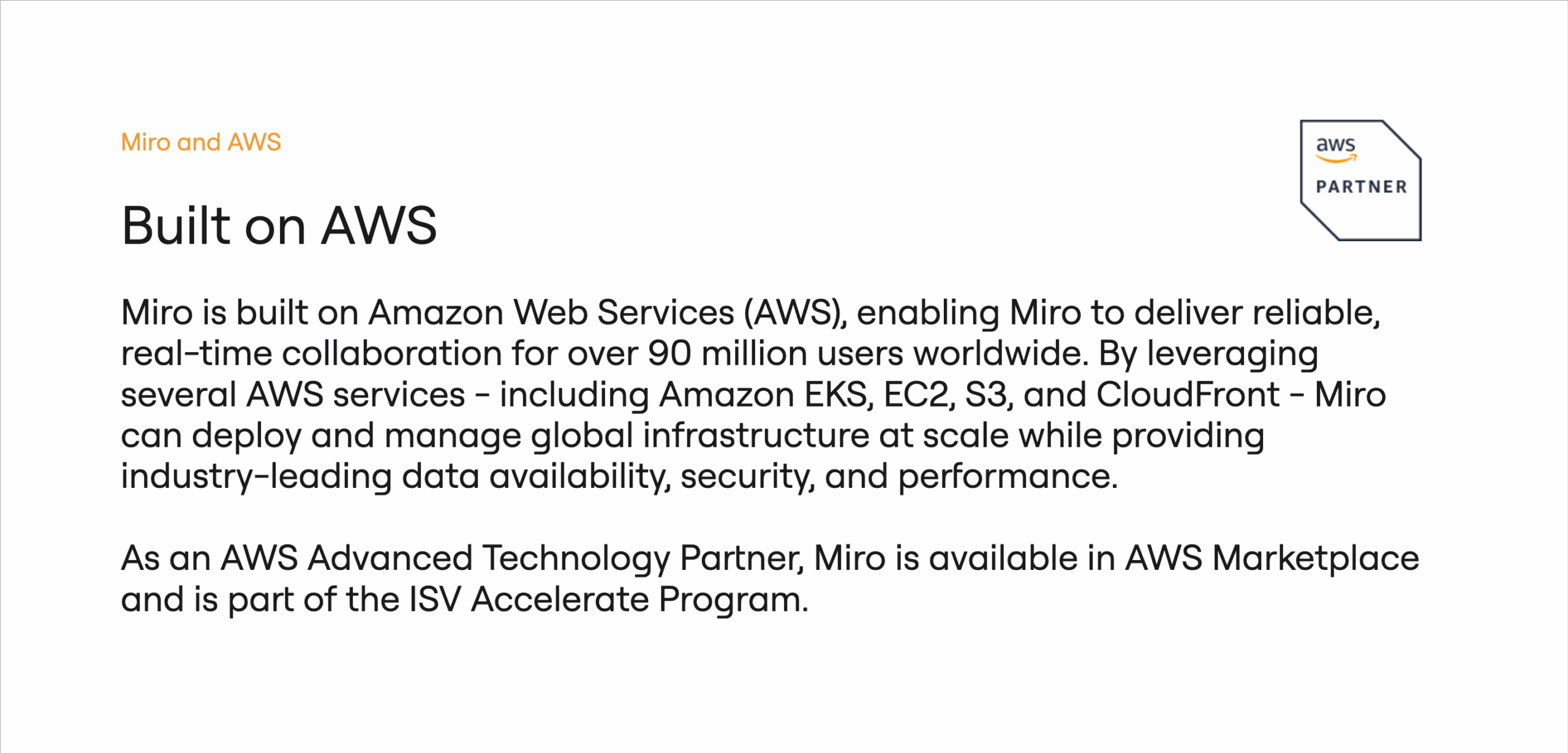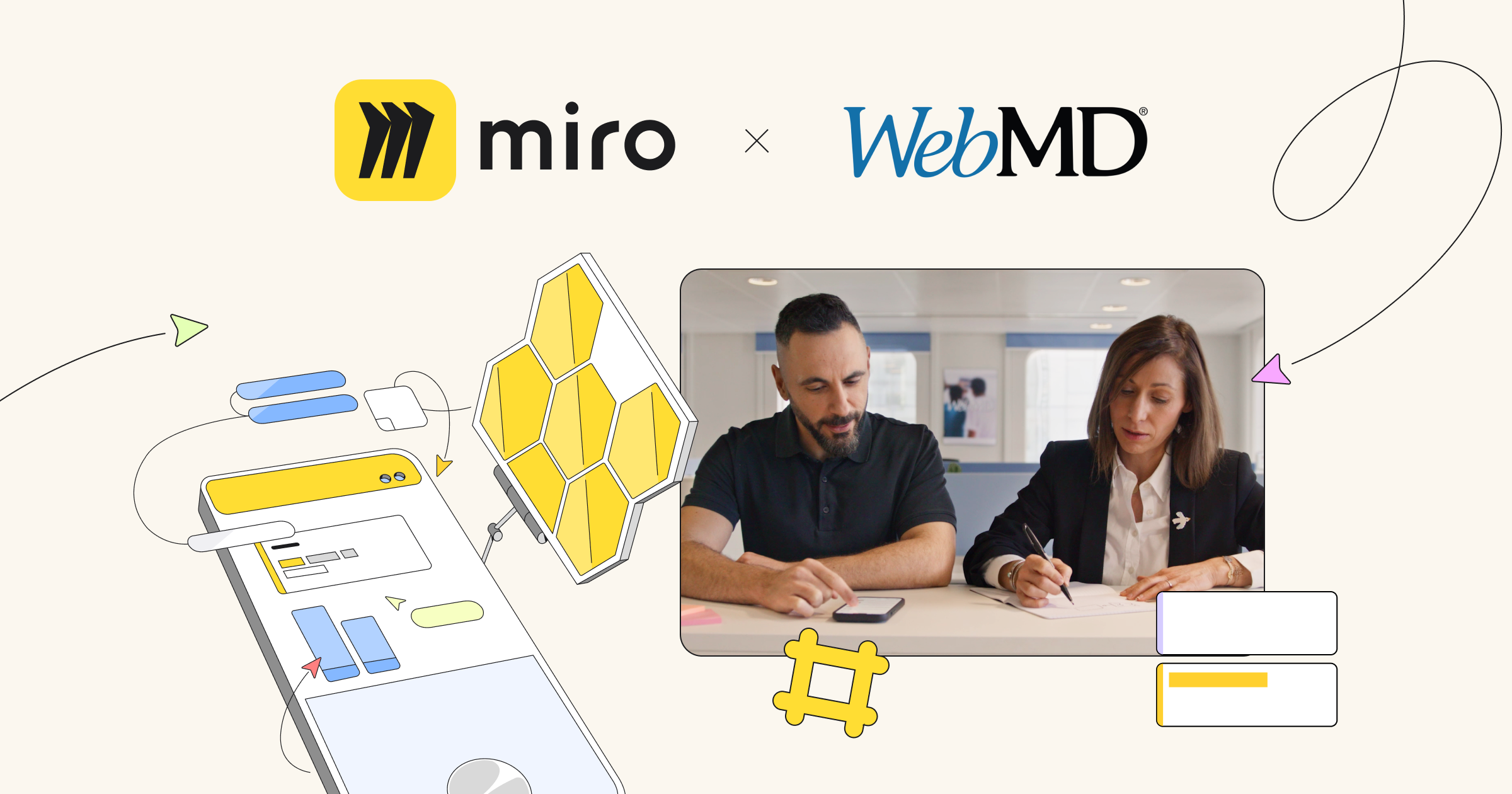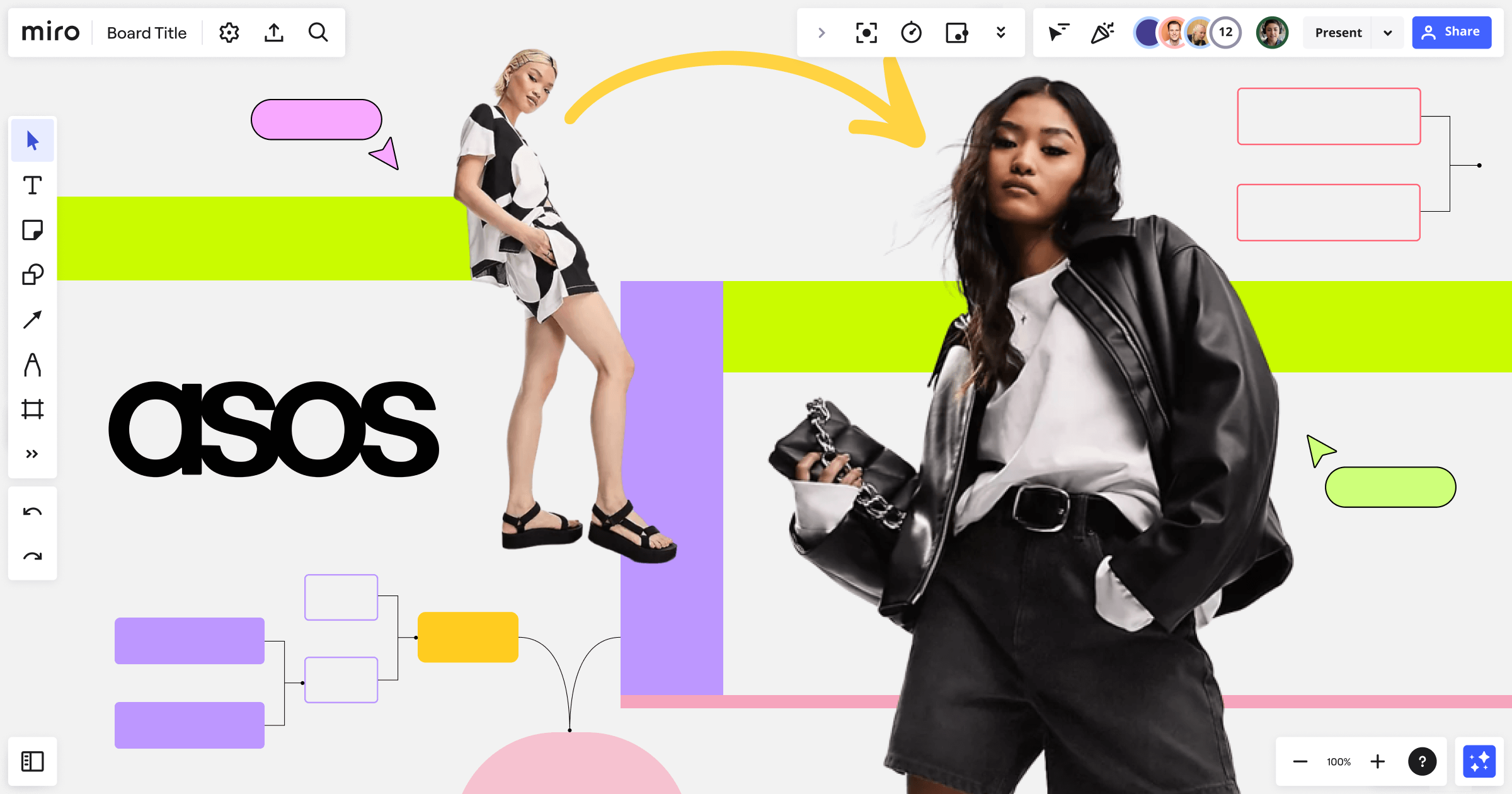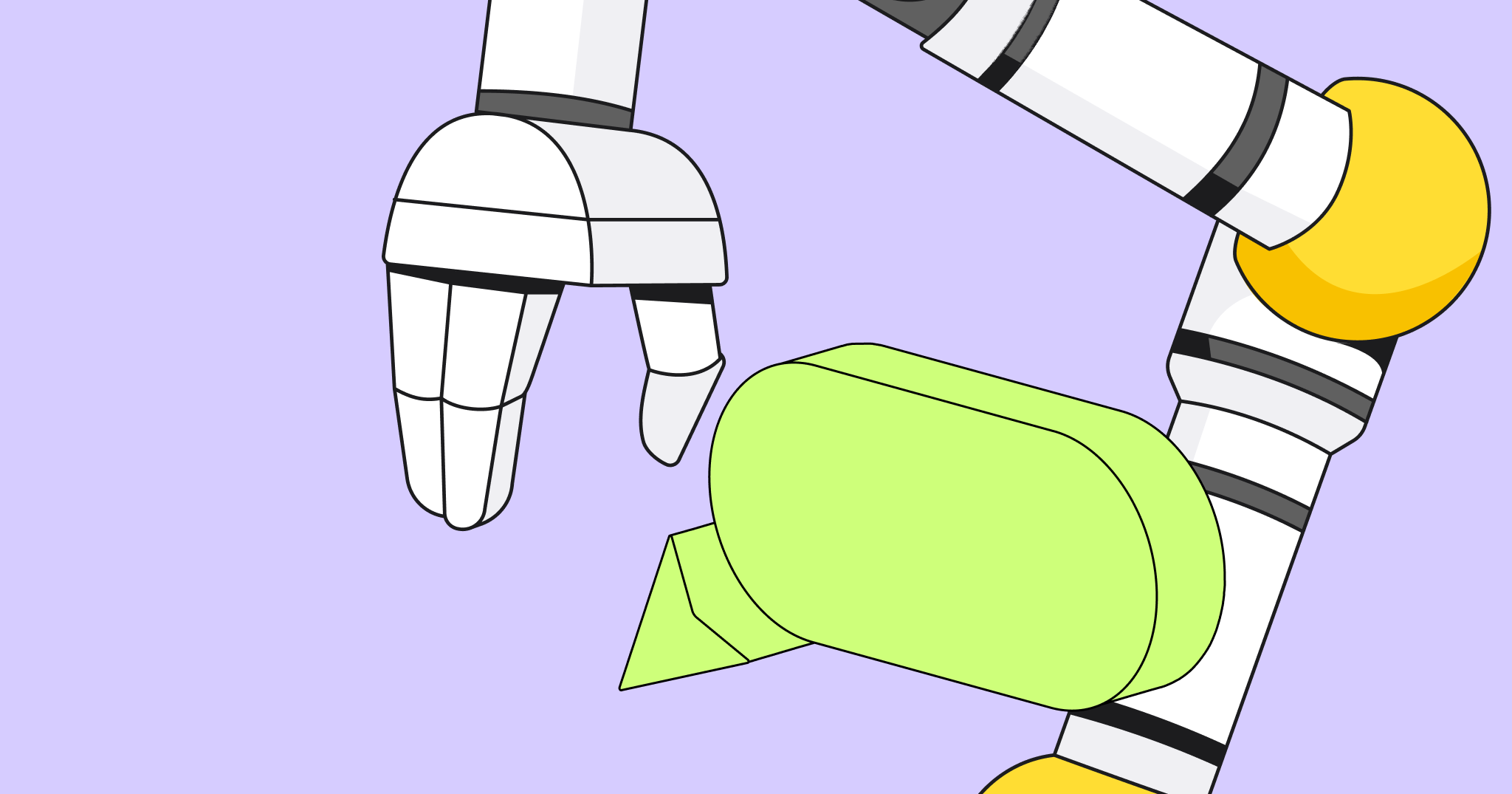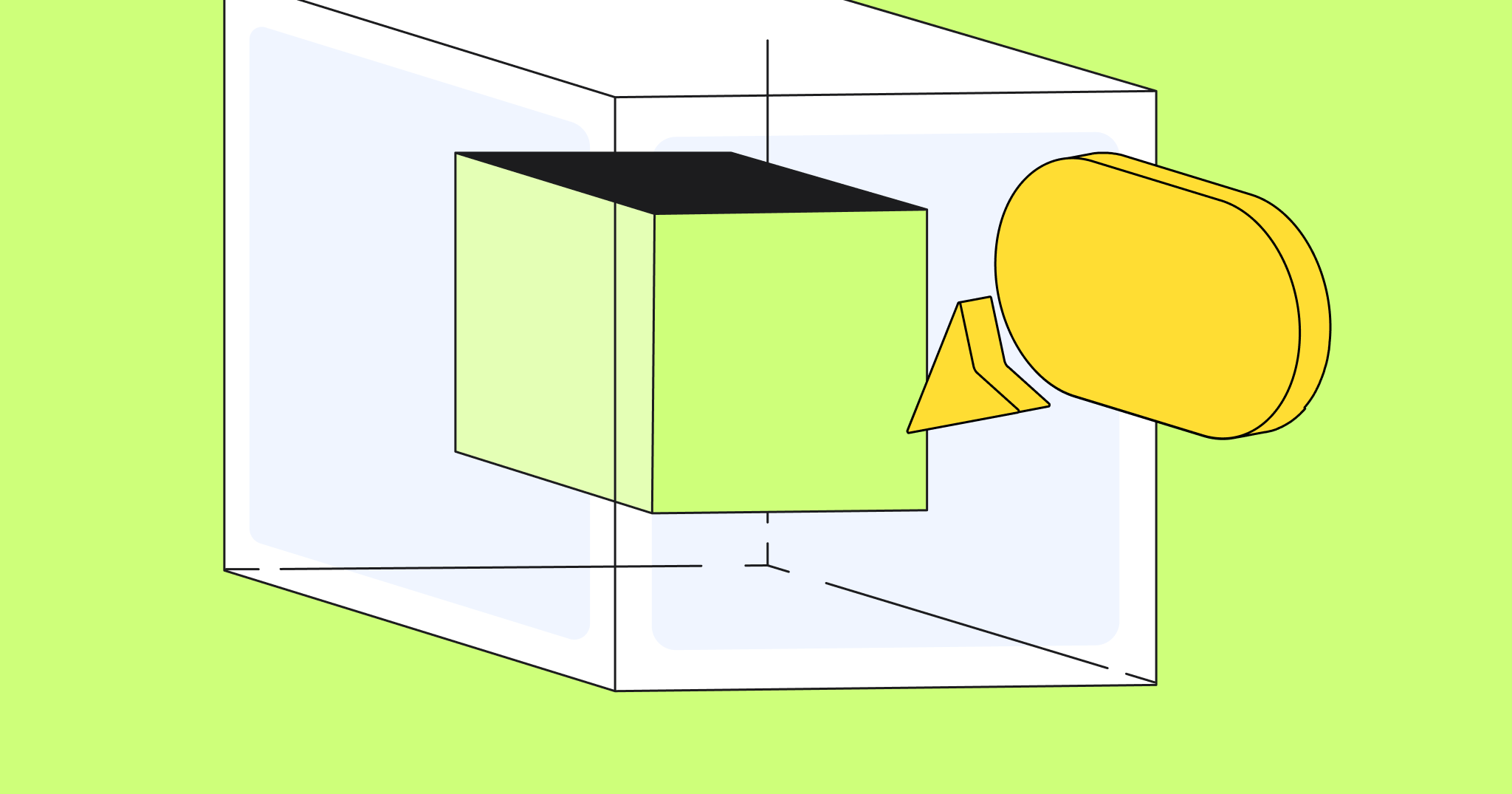WebMD is widely known as a leading online resource for timely healthcare information, trusted by consumers worldwide. The Medscape app is WebMD’s go-to resource for clinical medical information such as drug and disease data, designed to help healthcare professionals deliver better patient care.
Today’s healthcare providers are facing intense pressure for multiple reasons. First, there are shortages in the healthcare workforce as we address the needs of an aging population, and second, there is a rising prevalence of chronic diseases. Tools like Medscape are essential to support providers in their daily practice.
Recognizing these challenges, WebMD knew it needed to continually invest in improvements to Medscape that allow doctors to access medical information they need as quickly and simply as possible. By improving collaboration and creating regular feedback loops with physicians and healthcare providers, the product teams were able to create a delightful user experience.
60% more product improvements per quarter
10% increase in app engagement
10x more user interactions (interviews, surveys, etc.)
Story highlights
- The product and design teams at WebMD needed to create a fast, simple user experience on their Medscape app to help physicians provide excellent patient care.
- With Miro, teams smoothly transitioned to continuous discovery, a more customer-centric and agile approach to product development.
- Now product development teams can easily connect with stakeholders and synthesize customer feedback all in one place, helping them deliver product improvements faster.
Watch the video
The problem: Siloed product discovery practices meant inefficiencies in app development
Product innovation is important in any industry, but in healthcare, prompt development can potentially impact patient outcomes and wellbeing. That’s why WebMD wanted to ensure its Medscape app would provide not only the most up-to-date clinical information, but also present content in a way that best served providers — who use the app both ahead of and during patient visits.
To accomplish this, the leadership at WebMD knew they needed to change the way product development worked.
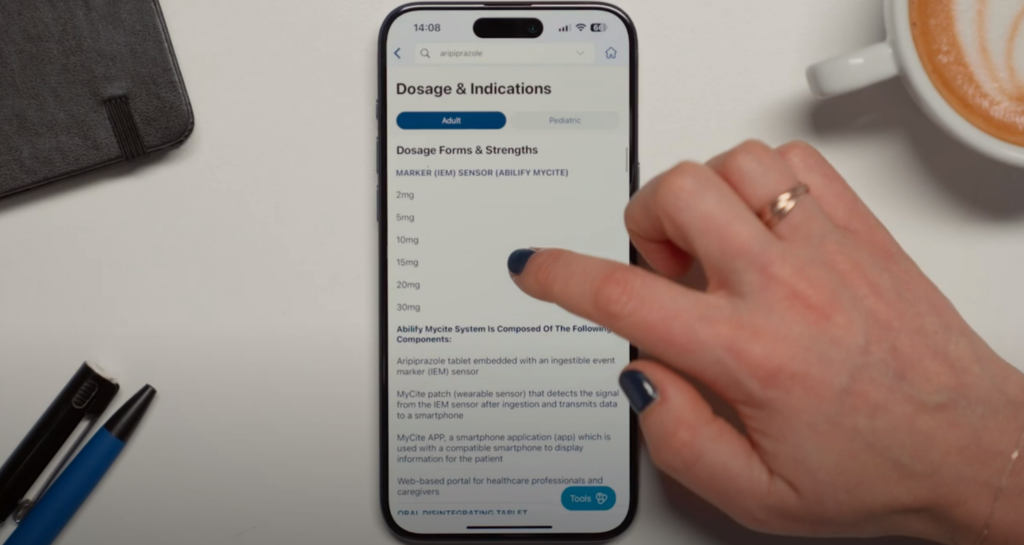
“Product discovery is an essential part of product development, as it is the process by which product teams identify the big problems they need to solve for their customers and how to best address them in order to have a real impact. We needed to improve our discovery practices at scale in the product organization.”
Sandrine Veillet, VP of Product Management at WebMD
Traditionally, the product team used a waterfall approach to discovery, which involves linear, sequential phases. When one phase ended, the next would begin. This process prevented efficient collaboration between the product manager, the product designer, and the tech team in the early phase of product development and precluded continuous feedback from users, reducing the team’s ability to improve and adjust the solution along the way.
Teams were also experiencing siloed workflows, fragmented communication, and too many meetings, making it difficult to align on product outcomes and solution ideas. And with information and decisions from discovery activities spread across slide decks and Google Docs, it was challenging to get one centralized view. This fragmentation and misalignment generated delays and rework.
“Once you understand the problem, you need to figure out the solution to address it through the discovery process. This requires cross-functional ideation, prioritization and swift decision making based on physicians’ feedback before building it.”
Antoine Yassa, Product Director at WebMD
This inefficient process meant updates to the Medscape app could be released to market without fully addressing the big problems of healthcare professionals. That’s why WebMD sought a new way of working that would foster collaboration and improve efficiency among product development teams, which in turn would result in a better app.
The solution: A templatized and scalable continuous discovery model
The WebMD product team attended a masterclass led by Teresa Torres, acclaimed author of Continuous Discovery Habits. She coached them on making the most of user interviews, identifying the right opportunities for product improvement, and connecting to the right outcomes for both the business and users. During and after the course, it was clear that Miro was the best solution to support WebMD’s transition to continuous discovery.
Thanks to Miro, everyone can equally participate in the continuous discovery process. This is because everyone on the team — product managers, designers, developers — can converge from the outset in a shared collaboration workspace. In this way, Miro has helped the product team transition away from the linear waterfall approach to a more streamlined, agile, and continuous discovery lifecycle.
Unified workspace brings in all team perspectives
Miro serves as a single, centralized repository where the team can conduct user interviews, store research data, organize insights, and synthesize learnings. This makes it possible to chart a unified course in which the entire product development team can better identify and understand the needs of the healthcare professionals the Medscape app serves. Product managers are defining outcomes, prioritizing opportunities, and ideating solutions along with designers and developers. Working together every step of the way instead of one after the other helps create more efficiencies and alignment.
“Before Miro, it was the responsibility of the design team to identify risky assumptions. There was a lot of back and forth with the development team because feasibility concerns weren’t accounted for during the discovery process. We needed to bring product managers, designers, and developers in earlier, to identify desirability, viability, usability, and feasibility of assumptions earlier.“
Scotty Arlich, Product Designer at WebMD
Miro both facilitates efficient communication, and also empowers stakeholders across the team to contribute their unique perspectives early on in the process. This allows them to identify potential risks and opportunities before advancing to the build phase. In fact, including developers in the process earlier on accelerates the entire development process. The team is able to drastically reduce the average time to market.
“When Miro came along, it helped us streamline our continuous discovery process. It made our decisions, our learnings, and our knowledge much more robust and comprehensive. The visual language of Miro breaks down barriers between teams, and it was really a catalyst for innovation at WebMD Medscape.”
Antoine Yassa, Product Director at WebMD
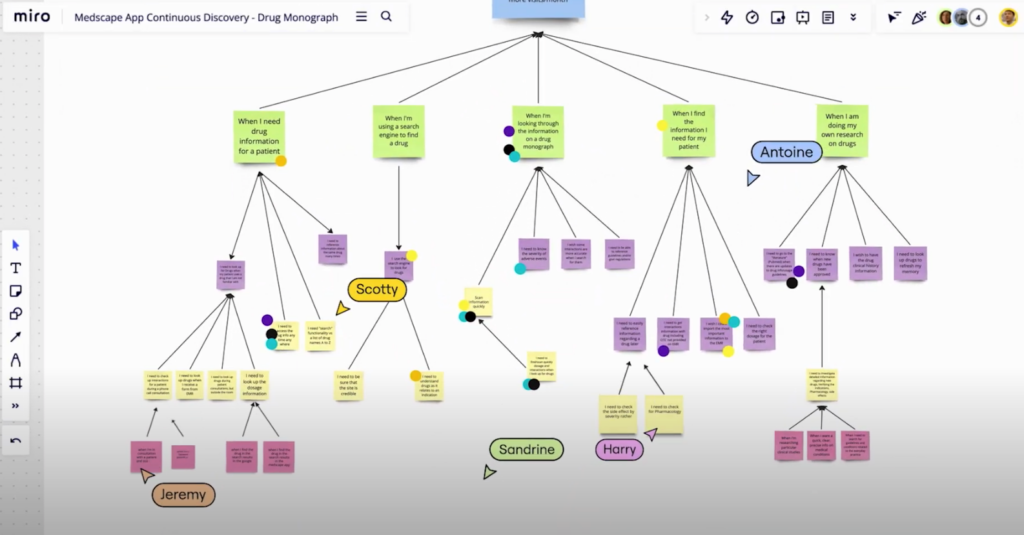
Consistent process and KPIs
Miro also enables the team to follow a templatized process while working toward consistent success metrics or key performance indicators. With a variety of templates from Design Thinking exercises to agile rituals, the product development team avoids duplicative efforts and saves time by standardizing the work they do.
“Before Miro, each different team had its own workflow. Now that we’re all using the same template in Miro, I’m able to jump into any project and know exactly where the team is at in the process.”
Scotty Arlich, Product Designer atWebMD
The result: WebMD improves scannability of Medscape app so providers can find pertinent information faster
In implementing continuous discovery with Miro, WebMD was able to gain deeper insights about its Medscape app users and thereby improve the product. The result was the team increased the number of product improvements per quarter by 60%.
Physicians and other healthcare professionals who use the Medscape app have taken notice. App engagement increased by 10% due to better scannability and other enhancements. As more users enjoy the app, the more they’re returning to the app again and again.
“Miro is essential. It helps us ensure that users’ continuous feedback is reflected and surfaced, and that we are learning from them and iterating to make the Medscape app better. We are delivering better outcomes for our users.”
Antoine Yassa, Product Director at WebMD
Collecting and synthesizing insights in Miro helped the design team increase user interactions tenfold, including user interviews, surveys, and unmoderated or moderated prototype tests.
Miro provides product development teams at WebMD a dynamic, centralized platform on which everyone can articulate and share ideas through a scalable, repeatable continuous discovery process. This fosters early engagement and alignment among stakeholders while leading to more informed decision-making. Though the journey of discovery can sometimes feel like a daunting maze of inputs and data, Miro provides a structured, templatized framework for teams to navigate this complexity with ease.
By adopting user-centric continuous discovery with Miro, WebMD can help healthcare professionals stay one step ahead in the constantly changing world of healthcare.
Learn how you can manage all your product development workflows in one visual, collaborative space — with Miro.
